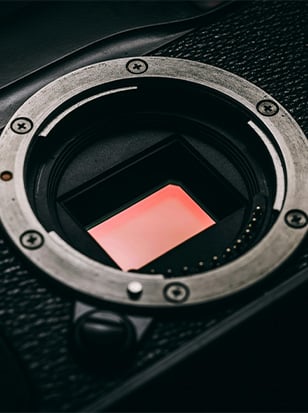
Surprise quiz — what is Fujifilm’s best-selling range of cameras? No, it’s not the medium format GFX cameras. No, it’s not the fabulous Fujifilm X mirrorless cameras, not even the outstanding X-T5. No, it’s not even the phenomenally popular street-shooting X100 compacts, even though the X100VI has been so in demand that a year out from its release, it’s still incredibly hard to get hold of one.
Well, you already knew the answer to this because you saw the title and clicked on it, but yes, it’s Fujifilm Instax. These little instant film cameras reportedly account for more than half of the revenue of Fujifilm’s imaging business. What’s more, the line’s popularity has only increased, with it being reported last month that Instax has set revenue records over the past four consecutive years, blazing past its previous numbers every time. People love these little things.
At first glance, you could be forgiven for not understanding exactly why Instax has been such a runaway hit. Sure, the cameras produce instant physical prints of your images — but so do the great cameras in the Polaroid range (indeed, Polaroid’s prints are larger and offer a greater level of detail). So do the instant-print cameras in Canon’s Zoemini range, which are both cheaper to buy and cheaper to run than Instax. What exactly is Fujifilm’s secret sauce?
I spoke to James Artaius, the Editor of Digital Camera World who also fills the role of the site’s resident instant photography expert, reviewing many of the new instant cameras that hit the shelves. What’s his take on why Instax has become so dominant?
“Fujifilm has its finger on the pulse more than any other camera brand. And just as the X100 cameras have caught fire with the social media generation, Instax cameras have truly clicked with the mainstream audience,” James tells us. “Cost is a big factor, as both the cameras and film are very affordable — they're rare impulse buys in the camera world, and are ideal for gifting. But, above all, they take really good pictures!”
I think it’s key there that James identifies multiple factors as being the key to Instax’s success. It’s all about balance — Instax cameras are fulfilling multiple desires for photographers at once, much more so than they did when they were first introduced back in the late 1990s. This is likely the result of a mix of canny design, Fujifilm’s industry expertise, and good old-fashioned luck. So what are these needs that Instax cameras are fulfilling?

First: the analogue factor. We’re all oversaturated with digital imagery, with phones turning photography into something much more disposable than it used to be, and photographers have been returning to film as a means of feeling more connected to the images they take. While the great film comeback of the 2020s does tend to be a bit overstated, it is definitely a real thing, with retailers reporting that the trend is heading upwards.
But the thing about film — and I speak as a practitioner — is that it’s a pain in the butt. Finding colour 35mm or 120 film for a good price is a pain. Keeping old cameras working is a pain, getting images developed is a pain, storing the negatives is a pain. Fujifilm Instax, however, couldn’t be simpler. Practically anyone from the age of 5 to 95 could pick up a Fujifilm Instax camera and get a usable photo, which is certainly not the case with a Pentax SLR and a roll of Kodak Gold.
Second: Cost. We’re all feeling the pinch, and while Polaroid’s instant pictures are better quality than Instax, they’re also more expensive to shoot. This is fine if quality is your focus — if I were embarking on a fine-art project based around instant photography, there’s no question that I would shoot it on Polaroid. However, as James says, for most users the affordability of Instax cameras and film is going to win out.
And lastly, a factor that I think is perhaps underrated: Instax cameras are cute! They’re cute, fun, well-designed objects that look nice on a shelf and are a pleasure to own. The pictures are cute too. Aesthetics are just as important in camera design as they are for any other product, and Fujifilm has absolutely nailed the look of these models. And please don’t try to tell me that you’re immune to the charms of a good-looking camera — I saw you linger on the X100VI page when I linked it in the first paragraph.
Will Instax’s dominance continue? James Artaius wonders if it may end up spreading itself too thin. “I love the Instax range, but it's becoming a bit labyrinthine – there are too many cameras and printers, and it's getting confusing,” he says. “I definitely prefer the photos from the analogue cameras over the digital hybrids.”
However, he is also an admirer of the newer Instax models in the Evo series, which offer a greater degree of picture control. “The way Instax is doubling down on design and tactility with the Evo models is genuinely brilliant,” he says. “They truly nail the tactile photographic experience, and they're just plain fun to use.”
One thing’s for sure — Instax isn’t going anywhere anytime soon.
About the Author
Jon Stapley is a London-based freelance writer and journalist who covers photography, art and technology. When not writing about cameras, Jon is a keen photographer who captures the world using his Olympus XA2. His creativity extends to works of fiction and other creative writing, all of which can be found on his website www.jonstapley.com










